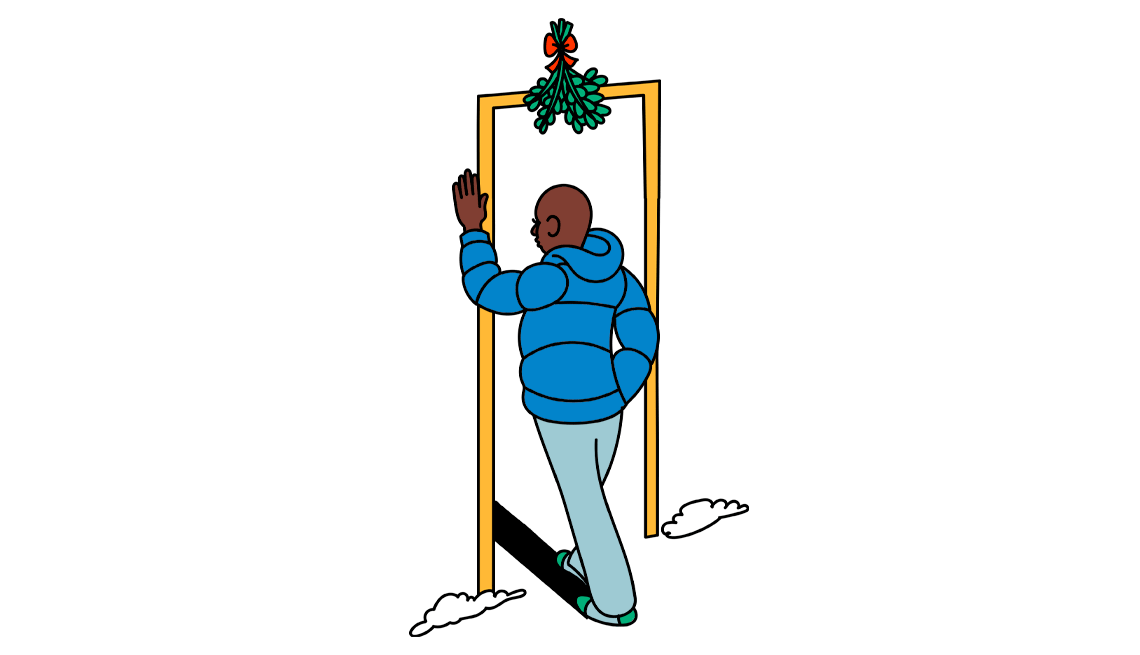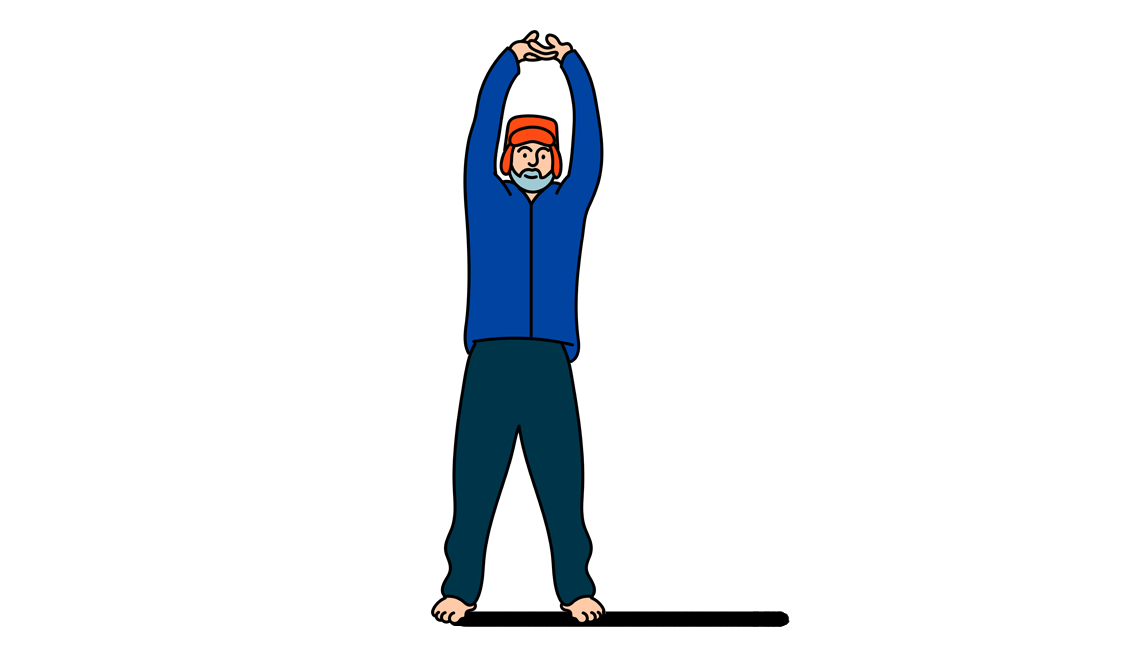AARP Hearing Center


Even if you’re lucky enough to live with year-round warm weather, chances are the next few months are going to involve a natural slowdown in your physical activity, thanks to fewer hours of daylight and the hectic schedule of the holidays. “We all experience some degree of hibernation when winter comes,” says Nicholas A. DiNubile, an orthopedic surgeon and chief medical adviser for the American Council on Exercise. “But less outdoor activity and more chronic sitting causes four areas to tighten in almost everyone during the colder months, regardless of age or activity level.”
Specialists refer to these four body areas as BACH: the Back (lower), Anterior deltoids (front of your shoulders), Calves and Hamstrings (back of your thighs). Let them tighten up over the winter, and not only do you put yourself at risk of neck, back and shoulder pain but, come spring, you might be more likely to pull something besides weeds. Incorporate these six simple exercises into your weekly routine, however, and you may improve your balance and flexibility, quiet those creaky body parts, and decrease your risk of falls this winter and injuries come springtime.
1. Single-leg hamstring stretch
Loosens the hamstrings, lower back and calves. Sit on the floor (or bed) with your legs extended straight in front of you. Bend your right knee and tuck your right foot along the inside of your left thigh. Slowly bend from your waist (don’t hunch forward) and reach with both hands toward your left foot as far as you can. Hold for three deep breaths, then switch sides to reach toward your right foot. Alternate from left to right to stretch each side three or four times.
Tip: Instead of reaching, you can slide your hands down your extended leg to help track your progress as you become more flexible.


2. Doorjamb stretch
Loosens the anterior deltoids. Stand inside an open doorway and raise your left arm out to the side with your elbow bent at a 90-degree angle, upper arm parallel to the floor, fingers pointing upward. Place your left hand flat along the frame of the doorway so that your entire lower arm rests on it. Gently lean (or take a tiny step) forward until you feel a slight stretch within the front of your shoulder and chest. Hold for 8 to 10 seconds, then switch positions to stretch your right arm. Alternate from left to right until you’ve stretched each side two or three times.
Tip: Keep your elbow in line with your shoulder at all times.


3. Pillar stretch
Improves shoulder mobility, posture, and rotator cuff function — as well as extends your spine. Stand straight with your feet hip-width apart and your hands clasped in front of you, fingers interlaced. Keeping your hands together, extend your arms over your head and turn your palms outward. At the top of the stretch, your arms should be straight overhead with your palms facing the ceiling. Hold for 20 to 30 seconds.
Tip: For an extra stretch, keep your arms extended above you and gently lean as far as you comfortably can to each side.































.jpg?crop=true&anchor=13,195&q=80&color=ffffffff&u=lywnjt&w=2008&h=1154)


































You Might Also Like
25 Great Superfoods for Longevity
Delicious foods tied to lower risk of disease and death
25 Great Ways to Get a Flatter Stomach
Tips on how to lose belly fat and get a tighter tummy9 Daily Habits for Healthy Aging
Everyday choices can impact how well you age